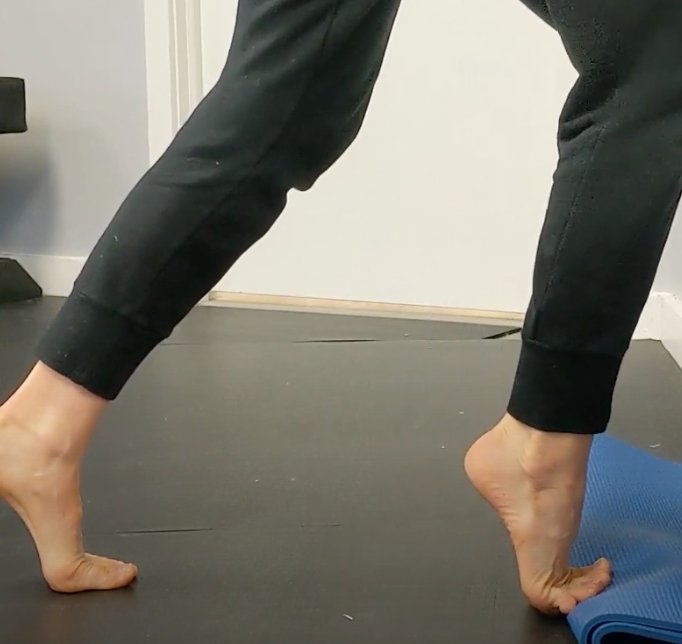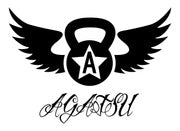
Target Your Tight & Tender Feet
If you’ve been keeping up with what we’re sharing, you’ve gotten to know your feet a little better. You have massaged your feet and noticed how the muscles connect to the main bones and wiggled and stretched your toes. You’ve balanced on one leg and walked around barefoot, to feel how you move across the floor. You may have found places on your foot that felt tender or stiff. You may have noticed that your toes don’t move as well as you expected.
So what does any of that mean?
It could be a simple as the fact that you haven’t paid much attention to them, generally. It might mean that you haven’t trained foot dexterity (we call it Toe-ga, for kicks) or strength. It might mean something more urgent, that there is something specific that needs more attention. This is especially likely if you are in pain or notice that these issues limit your activities.
Limited toe mobility can lead to compensatory patterns like turning the foot out during the stance-to-toe off portions of the gait cycle- this looks like rolling over the base of the first toe, instead of through the first and second toes. It could look like rolling through the arch, with a duck-foot-like gait. It could also look like a bouncy, early heel rise as weight passes over the foot.
Any time we modify our movement to avoid difficult positions, something else has to pick up that slack, meaning that another joint (or more) will be working harder than it needs to. Example: if a person rolls through the arch (into excessive pronation), the knee will have to absorb that rotation, as the tibia and fibula will roll medially as a result of the talus and calcaneus (at the ankle) dropping inwardly. The upper “end” of the tibia and fibula, or shin-bones, meet the femur at the knee joint. When the knee rolls inward, the lower portion of the femur, or thigh-bone, follows, drawing the hip into internal rotation.
Each joint connects to another. The foot-bone connects to the shin-bone and the shin-bone connects to the thigh bone, etc… We could keep moving up the (kinetic) chain, but you get the idea.

What if the toes seem to move well, but the arch feels tender and the ankle is stiff?
Last week introduced the three primary arches and the parts of the foot- so you know it’s a pretty complex structure. If the ankle isn’t moving well, as noted above, something is going to take up the slack. A certain amount of dorsiflexion (the flexion of the foot in an upward direction, whereby the top of the foot moves closer to the lower leg) is essential for walking and squatting, if the foot is unable to dorsiflex enough, common compensations in gait appear which are similar to those with limited first toe mobility. When squatting, a person might turn the feet out, step wider, raise the heel, or roll into the arch. If the break-down stopped there, we might not worry so much. However, the knee receives that torque, as does the hip and pelvis, and this will cause compensations at the lumbar spine.
I know that’s a lot of information to parse through, particularly if anatomy isn’t your strong suit. So here are the meaty bits: what kind of drills you can do to target tight and tender feet-
Foot Rolling With A Stick Or Cork:
Spend 2 minutes, rolling the bottom of your foot on a stick. Target the toes, ball of foot, heel, and all three arches. Move slowly and deliberately, and make sure you can breathe freely. If this is too “sensory rich” take a seat and reduce the weight through that foot. When you find a particularly spicy spot, pause and wiggle your toes for 10 seconds, before moving to another spot
Toe Thread Circles:
Thread your fingers through your toes (if this feels nearly impossible, you might have hit the jackpot for where to start!). Aim to get your fingers all the way in and try to actively spread the toes away from your fingers. You will feel those intrinsic muscles in your mid-foot working. Start with 15-20 circles in each direction, daily
Push-Off Drill For Lead And Trail Foot:
This two-part drill targets the roll from the heel through the big toe, which necessary for walking and running. Follow up the first two drills with 10-15 of each of these push-off drills
As a reminder, this is not intended to diagnose, treat, cure, or prevent any injury. If you feel that you need guidance, ask for help. We offer in-person and virtual consultations. Contact sarah@agatsunc.com

Leave a comment